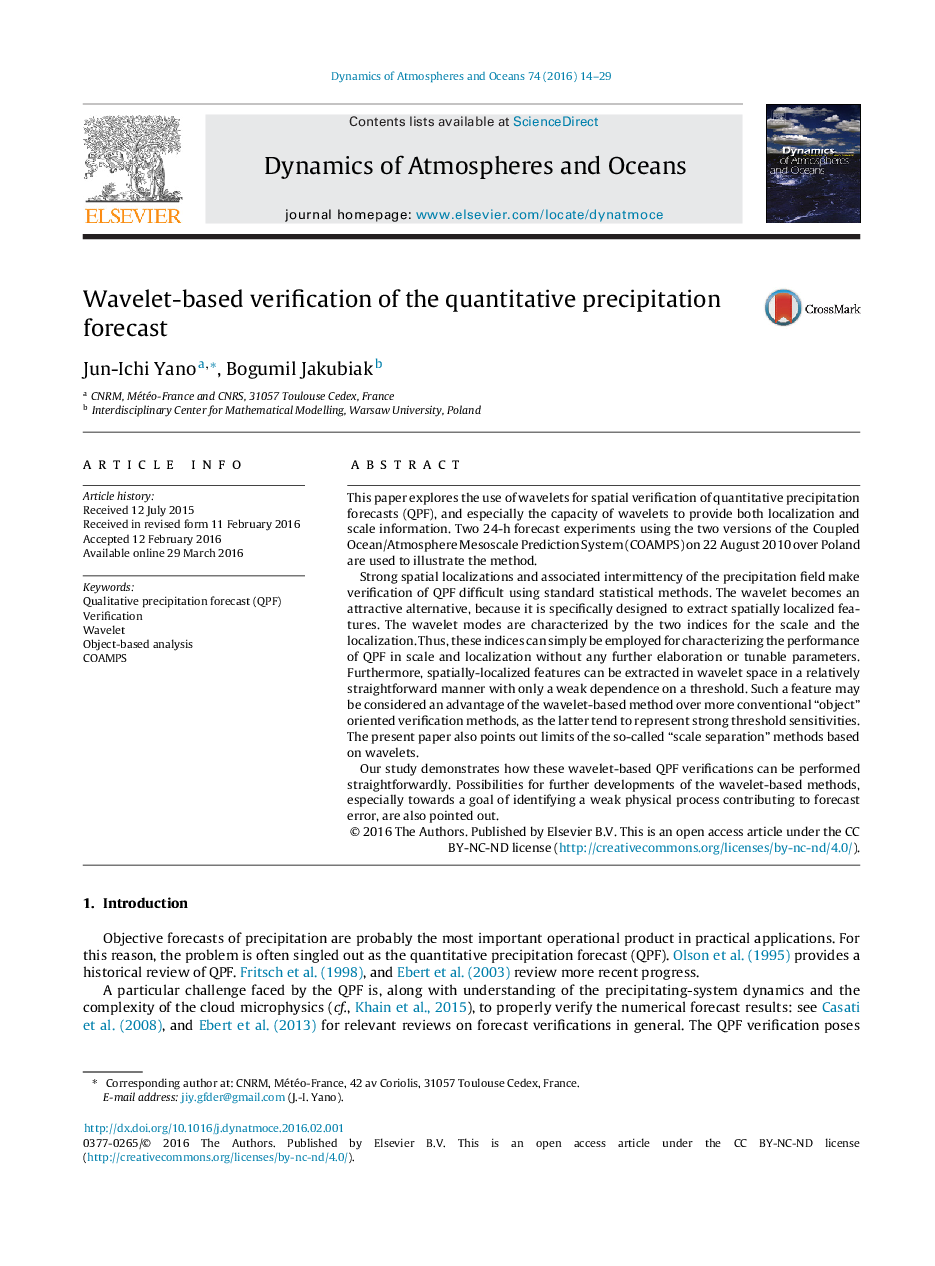| کد مقاله | کد نشریه | سال انتشار | مقاله انگلیسی | نسخه تمام متن |
|---|---|---|---|---|
| 6426511 | 1634216 | 2016 | 16 صفحه PDF | دانلود رایگان |
- Wavelet quantifies precipitation forecast uncertainty in localization and scale.
- Heisenberg's uncertainty principle limits QPF.
- Wavelet is constructed consistently with the Heisenberg's uncertainty principle.
- Wavelet can be exploited in straightforward manner in QPF verifications.
This paper explores the use of wavelets for spatial verification of quantitative precipitation forecasts (QPF), and especially the capacity of wavelets to provide both localization and scale information. Two 24-h forecast experiments using the two versions of the Coupled Ocean/Atmosphere Mesoscale Prediction System (COAMPS) on 22 August 2010 over Poland are used to illustrate the method.Strong spatial localizations and associated intermittency of the precipitation field make verification of QPF difficult using standard statistical methods. The wavelet becomes an attractive alternative, because it is specifically designed to extract spatially localized features. The wavelet modes are characterized by the two indices for the scale and the localization. Thus, these indices can simply be employed for characterizing the performance of QPF in scale and localization without any further elaboration or tunable parameters. Furthermore, spatially-localized features can be extracted in wavelet space in a relatively straightforward manner with only a weak dependence on a threshold. Such a feature may be considered an advantage of the wavelet-based method over more conventional “object” oriented verification methods, as the latter tend to represent strong threshold sensitivities. The present paper also points out limits of the so-called “scale separation” methods based on wavelets.Our study demonstrates how these wavelet-based QPF verifications can be performed straightforwardly. Possibilities for further developments of the wavelet-based methods, especially towards a goal of identifying a weak physical process contributing to forecast error, are also pointed out.
175
Journal: Dynamics of Atmospheres and Oceans - Volume 74, June 2016, Pages 14-29
